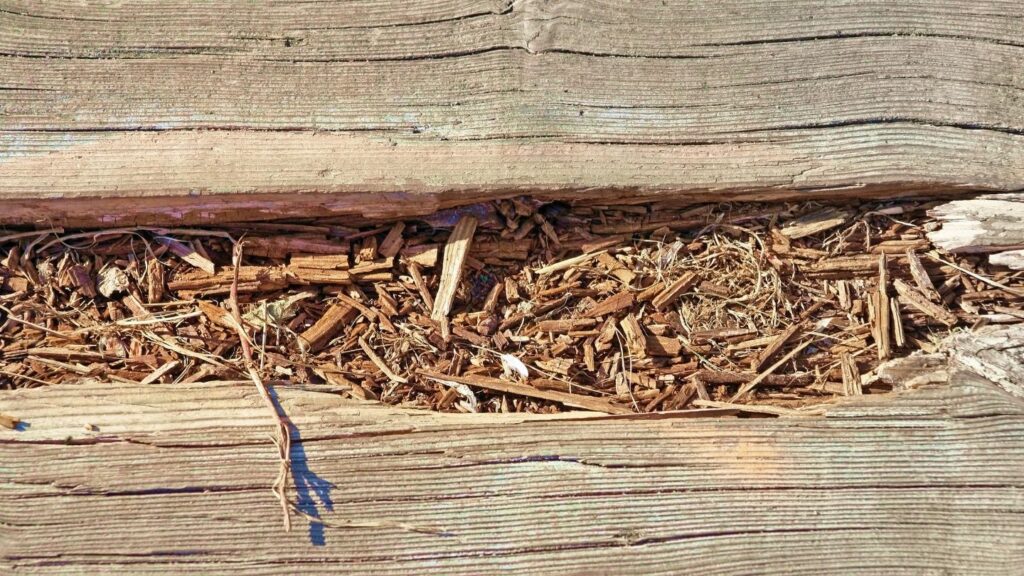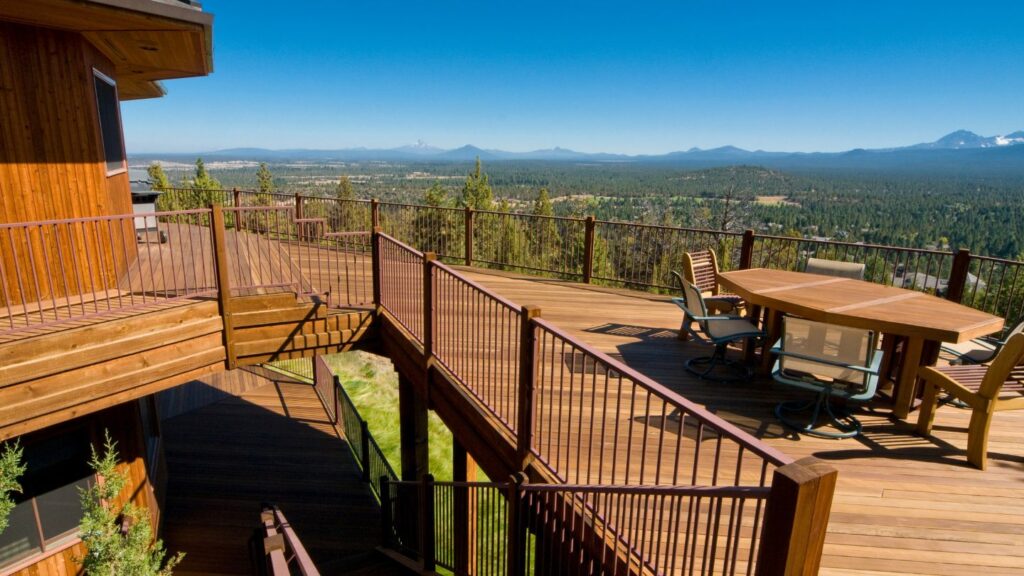I recently met with a customer who called us to look at a deck project that her husband started months earlier. He had torn out much of the old deck, but that was as far as he got. We were looking at a huge pile of old decking and a bare structure attached to the back door of their house. She asked if we could resurface the deck over the remaining structure, and she was hopeful that the work her husband had performed would lessen the cost. Unfortunately, some important structural components had been torn out as well so any potential savings would be offset by the rework to the structure. It was a frustrating situation, and one that’s not uncommon.
I’m a big fan of DIY. It can save you a lot of money and there’s nothing quite like the satisfaction you get from taking on a big project, working through challenges, and then enjoying the fruits of your labor. But before you jump into a big home improvement project like deck installation, it’s important to have a complete picture of what you’re getting into. Here are some things I have learned in my many years of deck building that might help you decide if you’re up to the task.
Advice and Tips for a DIY Deck Installation
Deck design and planning
Before the deck installation process can even begin, you’ll need to design and plan your deck. Where do you want it? How large will it be? How tall? Will it require railings and stairs? Think about how you expect to use the space and plan accordingly. There are a lot of online resources available to help you find basic deck plans. Just keep in mind that the more time you put into the planning phase, the smoother the construction process will be.
The best advice I can give here is to be certain that you are able and that you have time to take on a deck project. We get calls all the time by people who started a deck project but want us to finish it. This is never the ideal scenario for either party. The contractor could legally be held responsible for work his company didn’t perform, and honestly, once the owners starts talking to a contractor, they usually end up learning about additional deck options they might not have considered, but no longer have the option to incorporate.
What to consider in the deck design and planning stage:
- Time – Give yourself plenty of time. If you’re planning to work on evenings and weekends, it might take a couple of months or more. It’s better to take your time and do it right.
- Materials – With the invention of composite and low maintenance decking, the products have changed as well as the installation methods. A lot of the old pressure treated lumber deck building methods don’t work with a composite deck installation. Be sure you are comfortable about installing the products that you have selected. Read the installation instructions carefully and make sure you follow them.
- Permits – Once you have a general plan, you’ll need to investigate the building codes in your area and fill out applications for the appropriate permits. To obtain a permit you’ll need to submit a site plan and construction drawings. (People have also asked if we can frame their deck so that the owner can finish it. Unfortunately, we cannot help in this situation. In this case, since we would be starting the construction process, we would be responsible for obtaining the permit. Once the building permit is issued, the contractor is on the line to finish the project to the current building codes.)
How Much Does it Cost to Build Your Own Deck?
Building your own deck will cost roughly half as much as if you hire a contractor. As with any DIY project, you’re only paying for materials, not labor. But the cost of materials varies widely based on the deck materials you choose and the shape and size of your deck. I go into this in much more detail here in “How Much Does it Cost to Build a Deck“, but for the purposes of this article, be sure to include any extras that you’d like to incorporate into your deck plan when working out your budget:
- Lighting – Deck lighting adds ambiance, but it’s also an important safety feature. There are lot of different lighting options available from hard-wired to solar lighting. Whatever your preference, don’t wait until your deck is built to start thinking about lighting. It shouldn’t be an afterthought but a part of your initial deck plan.
- Tools – When you’re budgeting for your deck, don’t forget to include the tools you’ll need. You probably own most of the more basic tools needed, but power tools can be expensive if you don’t’ already own them.
- Seating – Whether you plan to build seating into your deck plan, or purchase patio furniture, it’s an expense that should be recognized and incorporated into your budget.
- Landscaping – The deck installation process will likely leave a barren area around your deck so put some thought into the type of landscaping you’d like to include once the construction is complete. Whether you hire a landscaper or do it yourself, it’s an expense people often forget about when they plan their budget.
Deck Construction
Once you have a plan and your permits are in place, you’re ready to break ground. Building your own deck is not rocket science, but it’s usually more involved and takes more time people anticipate.
What to consider before you begin deck construction:
- Have someone help you – You will need an extra hand, especially when setting beams and doing the framing.
- Follow the manufacturer’s instructions – This tip especially applies if you’ve chosen low-maintenance or composite decking, but also for staircase and deck railing installation. We use a lot of Trex decking products and they perform great if installed correctly. The key here is installed correctly. We have also seen them fail due to incorrect installation. The Trex lineup carries a 25-year warranty but their installation instructions must be followed precisely – otherwise that warranty is void.
- Fasteners – If it’s been a while since you’ve built a deck, nails and phillips-head screws are no longer the go-to fasteners used for decking. There are now wood deck screws, composite deck screws, special screws compatible for pressure treated lumber, hidden fasteners – a whole range of deck screws and fastening systems available. Do your research and be sure to use the proper fasteners for the material you’ve chosen.
The Bottom Line
It may seem overwhelming at first, but if you have the time and a solid understanding of basic construction principles, you can build a pretty incredible deck all on your own. Just keep in mind that while a DIY deck project might be a great option for some, it’s not the solution for everyone. A professional deck builder will build a deck better and faster. They understand the nuances of the construction process and they’re able to recognize and handle potential issues before they become problems.
That said, not all deck contractors are the same. If you do decide to go the contractor route, check out my article about “How to Hire the Right Local Deck Builder”.
And of course, if you live in Northeast Ohio and don’t have the heart to tackle of DIY deck project yourself, Woodland Deck would love to work with you to help you build the deck of your dreams. Contact us or get a free estimate today!




